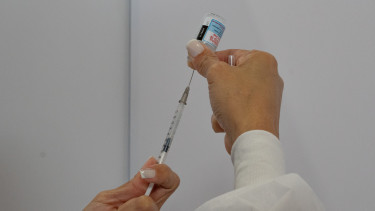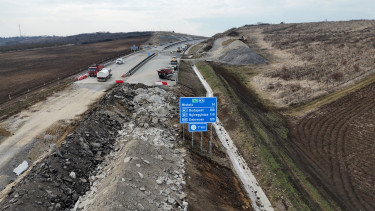Hungary Coronavirus Task Force renders key data practically useless

A suspicious figure
On Monday morning, Hungary’s Coronavirus Task Force reported 538 Covid patients being on ventilator, which marked a nearly 23% decline over the figure reported on Friday morning. Meanwhile, the number of people with coronavirus infection in hospital rose nearly 8% which led to the conclusion that the data on the number of ventilated people was a mistake, and a correction would certainly ensue. If only it was that simple…
Needless to say, that correction never came. What happened is deeply saddening and/or infuriating. The depth, reliability, number, i.e. the sheer quality of coronavirus-related statistics provided by local authorities have always been absolutely dreadful. And the situation has just got worse.
None of your business
The general attitude of local authorities is that the public has no business knowing what is happening in the country. The press is allowed nowhere near hospitals, let alone COVID-19 wards. Health care staff are essentially banned from talking to the media. There are no official reports by the Coronavirus Task Force on weekends despite sharply deteriorating epidemiological statistics. There are no downloadable Excel sheets, only daily written reports and aggregate figures (tests, doses administered, etc.). When they have no choice but to release some sensitive information, they print out the Excel sheet, scan it and upload it that way (no joke).
There are no data on hospital admissions, only a number of Covid patients in hospital in the morning reports. There are no data on patients in intensive care units, only the number of ventilated patients. Nothing on ICU bed occupancy. This would also be key to assess if hospitals were nearing capacity or not.
They downright deny having data on the vaccination status of those hospitalised, ventilated or that finally succumbed to the disease, although such information would be essential. The data are actually easily accessible, as before you would avail of public health services, you need your social security number (’TAJ-szám’), and the same number is required when you get vaccinated against SARS-CoV-2, or if you get any jab for that matter. Hence, getting information and sharing it with the public takes virtually the push of a button.
Should we give a boost to vaccinations? Yeah, nah.
If not for anything else, such statistics would be vital for at least one good reason. The government relies almost solely on vaccination, while Hungarians are reluctant to get their jabs. Yes, about 60% of the population are fully vaccinated against COVID-19, but as the effectiveness of vaccines wane over time, the percentage of people actually protected is a lot lower.
Survival stats that include the vaccination status of patients would make it clear that vaccines do work when it comes to preventing severe disease and death.
If you take a closer look at the current vaccination campaign (announced for Nov 22-28 with a 2.5-week preparation time and then extended by another week) where no prior registration is required to get your first, second or third dose of a COVID-19 vaccine, it will be clear that 3rd doses remain vastly more in demand than 1st or 2nd jabs. It is now evident that it was actually not the “hassle” of prior online registration and appointment booking that prevented around three million Hungarians from getting inoculated against coronavirus. It’s their determination not to get vaccinated. And it’s not even a hassle, but a simple procedure that takes a couple of minutes if you have a social security number, Internet access and a minimal level of digital literacy.
Here's the growth in the weekly vaccinations on the no-reg week compared to the preceding 'normal' week.
- 3rd doses = 403,399 (+37.3%)
- 2nd doses = 24,238 (+45.6%)
- 1st doses = 71,399 (+26%).
Look at the 7-day averages. Enthusiasm fizzling out.

And now this...
As of Monday, without any warning, remark or explanation, the Coronavirus Task Force started to publish only the number of Covid patients in invasive ventilation. The number of patients supported by noninvasive ventilation (NIV) was not published.
In effect, the Coronavirus Task Force has rendered a key metric of the pandemic quasi useless.
The severity of the ‘waves’ in the coronavirus pandemic can be measures by several indicators, but the most important ones are relating to hospitalisation: the number of Covid patients in hospital, and those on ventilator. Once coronavirus-related fatalities are known, ratios can be calculated that show the percentage of patients recovering without prior admission to an ICU, the hospitalisation per death ratio, the percentage of ventilated patients that die, etc.
Given that from now on the Coronavirus Task Force publishes only the number of Covid patients that are in invasive ventilation, which is a lower figure than the total number of ventilated patients, the percentage of ventilated patients dying will go up.
Want an analogy? How about this one?
Let’s picture a spaghetti western. Decrepit wooden buildings with bullet holes in them, a faded ‘Saloon’ sign, dirt devils twirling, tumbleweeds rolling on the main street, a cracked window here and there. A man staggers out of the barber shop, clearly agitated. Stubble on one cheek covered in soap, the other is already shaven. He is in a dispute with another customer about his boots. His words a slurred when he drunkenly shouts: “I just had by boosts cleaned, they are NOT dirty!” They are, actually. Their original colour cannot be seen under the dirt and patches of dry mud. The cowboy continues his cries desperately. And then he unholsters his Colt, waves it around a bit with a limp wrist in the direction of the barber shop where the other customer is hunkered in fear. Then he points the gun over his foot, showing that his boots are NOT dirty. “My boots… are… NOT dirty,” he croaks, and then shoots himself right in the foot.
That’s the Coronavirus Task Force for you. The number of ventilated coronavirus patients will look better on paper (there is no dirt on the boots), but a higher percentage of them will die (a bullet in the foot). Go figure.
What can we do about it all?
How can we remedy this situation? By looking at the previous ratio between the number of patients in hospital and on ventilator. And then use that ratio for the new number of ventilated patients. And have a more ore less accurate estimate by multiplying that figure with 1.4 (i.e. +40%). There you go. Extremely scientific, huh? That is how we have to work with such data.
When asked about the suspicious drop in the number of ventilated Covid patients on Monday, the Coronavirus Task Force replied to news portal 444.hu that in order to be able to combat the pandemic more effectively and organise hospital care better,
hospitals have been asked to provide even more uniform and detailed data than before.
It stressed that hospitals do have to report patients both in invasive and noninvasive ventilation, but the Task Force itself only publishes data on the former. However, it revealed to commercial broadcaster RTL Klub on Tuesday that there were 471 Covid patients in NIV on top of the 513 Covid patients requiring invasive mechanical ventilation.
513 ventilated patients alone would mark a 26% decline over the figure reported on Friday morning, while the number of Covid patients in hospital was up 10%. Such opposite changes are impossible in the current phase of the pandemic, according to any estimate. Adding up the above figures results in 984 ventilated patients, an extremely high figure compared to the ones reported before this change in the protocol. This would mark an over 41% jump over Thursday (Friday morning report).
A possible conclusion is that without a clear mandate hospitals have been reporting either only the number of patients in invasive ventilation or all of them, including those in NIV. If that is true, comparisons of the number of ventilated patients make little sense. Unless we make the above correction, that is.
Let's give the Coronavirus Task Force the benefit of the doubt, and accept that it was not intentionally creating this mess. Let's assume that it was honestly aiming for more clarity. Wasn't there at least one high-ranking decision maker that pondered about the consequences of this decision and suggested to put off this change in protocol until at least the end of the current wave? Wasn't there anyone that drew up the pros and cons of this decision, carried out a cost-benefit analysis and concluded it just might not be worth it? Wasn't there anyone that said it's a great idea but why not wait a couple of weeks before implementing it? So many academic questions, to which we will also have no answer.
Cover photo: Getty Images







